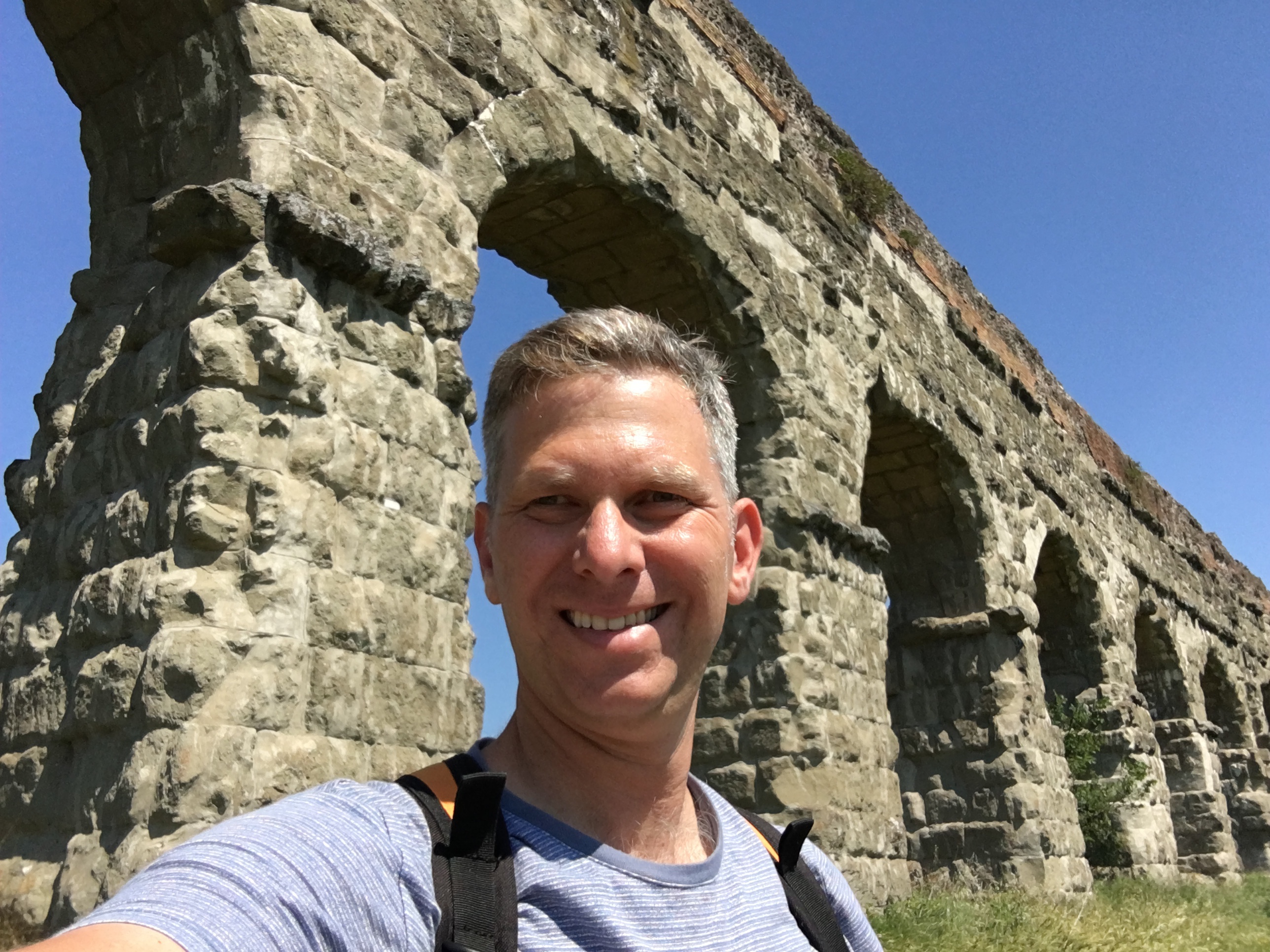Park of the Aqueducts. That pretty much says it all. The best thing in Rome. Yes, you read that right. The Colosseum, the Forum, Sistine Chapel. All incredible. But you already know about those. For me, the arcades of the aqueducts marching into Rome from the hillside are an amazing, evocative sight and a must-see for any serious visitor to Rome. But perhaps happily for us, this park is virtually unknown to tourists. For locals the paths and open fields are popular for jogging, cycling and picnicking. It’s only a few blocks away from the subway stops Lucio Sestio or Subaugusta.
The remains of three important aqueducts are well preserved, and thus these are today’s trium perfectum: Acqua Marcia dating from 144 BC, Acqua Claudia built in 38 AD, and Acqua Felice, which is not ancient but modern as it dates from ‘only’ 1585. Further, Acqua Felice still functions as part of Rome’s water supply today.
Entering the park from the northeast, one first encounters the remains of the Acqua Marcia. The arches are low to the ground, but still elegant. Emerging from below ground at a similar location and running alongside is Acqua Felice which comes from the same source that the ancients used.
1. Acqua Marcia
2. Acqua Felice
Co-located infrastructure! Actually, re-used infrastructure. Acqua Felice emerging from the same channel as Acqua Marcia.
And you can walk/sit on top of Acqua Felice.
3. Acqua Claudia
The Marcian and Felice are fascinating, but one is powerfully drawn to the Claudian arcade. The tallest arches tower at an astounding 27 meters (88 feet)!! There are several sections extant, with the most incredible a series of 153 arches that stretch uninterrupted for over a kilometer. The vista across the pasture dotted with umbrella pines sends one back in time reflecting on these giant structures that brought water to the city while simultaneously announcing the power of the empire.
While aqueduct arches and bridges were relatively rare (recall that more than 90 percent of all aqueducts were underground, see my previous post on this from Narni), Acqua Claudia had the longest stretch on elevated arches of all the aqueducts of Rome. It originally stretched for an additional 5 km all the to the city walls. But heading away from the city, after about 700 meters the arches start to gradually diminish in size as the land surface gently slopes upward until the last one is short enough that an adventuresome spirit could climb up on top!
Also recall that the whole point of the arches was the water channel on top and that the slope of the channel was designed to be not-too-steep and not-too-gentle, all the way from the hillsides into the city.
The business end of an aqueduct
Still thirsty for more aqueducts? On our next stop, we head into the hills east of Rome and trace the aqueducts to their source…
